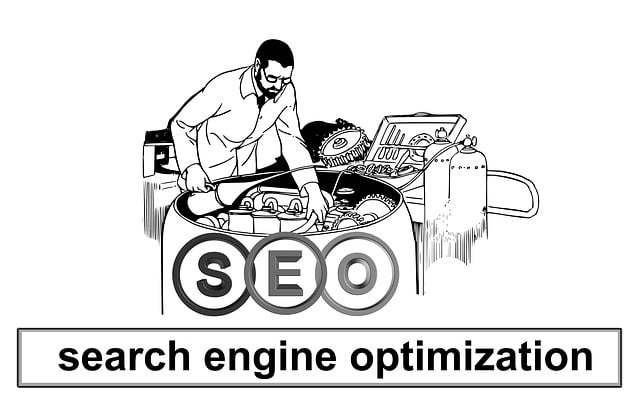In digital marketing, White-Hat SEO Techniques are essential for long-term success in search engine rankings while adhering to Google's guidelines. These techniques prioritize ethical and sustainable practices, focusing on creating high-quality content, optimizing website structure, and building genuine backlinks from authoritative sources. Keyword research, on-page optimization (including titles, meta descriptions, and mobile-friendliness), structured data markup, and technical optimizations like site speed and security are core components. Regularly producing valuable content, engaging with influencers through guest blogging, and measuring KPIs contribute to a robust SEO strategy that enhances user experience and aligns with Google's preferences for accurate search results and fair competition.
In today’s digital landscape, a robust online presence hinges on effective search engine optimization (SEO). To stand out in the eyes of Google—the world’s most influential search engine—adherence to White-Hat SEO techniques is crucial. This article delves into the core principles of ethical SEO practices, offering a comprehensive guide to navigating the complexities of digital marketing. From on-page optimization and keyword research to building quality backlinks, we explore proven strategies for achieving top rankings while ensuring your approach aligns with Google’s guidelines.
Understanding White-Hat SEO: The Google-Approved Approach

White-Hat SEO refers to a set of ethical and sustainable techniques designed to improve search engine rankings while adhering to Google’s guidelines. It’s called “white-hat” because it represents the honest, transparent approach recommended by search engines, in contrast to less scrupulous practices that can lead to penalties. These methods focus on creating high-quality content, optimizing website structure, and building legitimate backlinks from authoritative sources.
By implementing white-hat SEO techniques, businesses can achieve long-term visibility and organic growth without risking demotion or removal from search engine results pages (SERPs). This involves keyword research to understand user intent, on-page optimization to ensure content relevance and readability, and off-page strategies like guest blogging and social media engagement to build a trustworthy online presence. Google favors such practices because they enhance the overall user experience, making websites more accessible, valuable, and relevant to their audiences.
Defining Ethical Search Engine Optimization Practices

In the realm of Digital Marketing, Ethical Search Engine Optimization (SEO) practices are a cornerstone of sustainable online success. It involves employing White-Hat SEO Techniques that prioritize user experience and adhere to search engine guidelines, such as those set by Google. These methods focus on creating valuable, relevant content, optimizing website structure, and building genuine backlinks, ensuring long-term visibility without cutting corners.
Defining ethical practices is crucial to avoid the pitfalls of Black-Hat SEO, which includes manipulative tactics like keyword stuffing, hiding text, or using automated tools for spammy link building. Ethical SEO respects user intent, promotes fair competition among websites, and ensures search engines provide users with accurate, high-quality results. By embracing these principles, businesses can build a solid online presence that resonates with their target audience and withstands the evolving algorithms of major search engines.
Key Principles of White-Hat SEO Strategies

White-Hat SEO Techniques are rooted in ethical and sustainable practices aimed at improving search engine rankings while adhering to Google’s guidelines. These strategies focus on creating high-quality content, optimizing web pages for relevant keywords, and ensuring a seamless user experience. By prioritizing these key principles, websites can attract organic traffic over time without the risk of penalties from search engines.
Core White-Hat SEO Principles include keyword research and integration, effective content optimization, building quality backlinks through natural means like guest blogging and partnerships, enhancing site speed and mobile-friendliness, and ensuring proper website structure and navigation. These techniques promote a strong online presence by fostering user engagement, reducing bounce rates, and encouraging longer visits, all of which signal to search engines that the site provides valuable information.
On-Page Optimization: A Cornerstone of Google-Friendly SEO

On-Page Optimization is a fundamental cornerstone in the realm of Google-Friendly SEO. It involves implementing white-hat SEO techniques directly on your website to enhance its visibility and relevance in search engine results. By focusing on optimizing key elements such as titles, meta descriptions, headings, and content, you ensure that both search engines and users find your site easily. This includes using relevant keywords naturally throughout your content, ensuring mobile-friendliness, and improving page loading speeds – all factors that Google considers when ranking websites.
Effective on-page optimization also involves structured data markup, which helps search engines understand the context and meaning behind your content. Additionally, internal linking strategies play a crucial role in guiding users and search engine crawlers through your site, fostering a better navigation experience. These practices collectively contribute to a robust on-page SEO strategy that forms the basis for long-term success in attracting organic traffic from Google.
Effective Keyword Research for Maximum Impact

Effective keyword research is a cornerstone of successful White-Hat SEO Techniques. It involves understanding your target audience, their search behavior, and the language they use to describe their needs. By utilizing tools like Google Keyword Planner, Ahrefs, or SEMrush, you can uncover high-volume, low-competition keywords that align with your content strategy. This process allows for the creation of relevant, valuable content that resonates with users, thereby improving search engine rankings and driving organic traffic.
Moreover, keyword research helps in identifying long-tail keywords—specific phrases with lower search volume but higher intent. Targeting these can lead to more qualified leads and better conversion rates. It’s crucial to integrate these keywords naturally into your website’s content, meta tags, headers, and URLs, ensuring a seamless user experience while maintaining search engine optimization effectiveness.
High-Quality Content Creation for Better Rankings

Creating high-quality content is a cornerstone of successful White-Hat SEO Techniques. Google prioritizes delivering valuable, relevant, and unique information to its users, and this is what your content should aim to provide. Investing time in thorough research, crafting compelling narratives, and ensuring your content answers user queries comprehensively can significantly boost your website’s rankings. Well-written, insightful articles that engage readers are more likely to be shared and linked back to, which signals to Google that your site offers a rich resource for its audience.
Focusing on consistent quality is key; regularly producing informative content that aligns with your target keywords and demonstrates expertise in your field can establish your website as an authority in its niche. This consistency not only keeps your audience interested but also encourages search engines to reward your efforts with higher rankings over time.
Technical SEO Considerations for Seamless User Experience

Google’s algorithms prioritize user experience, making Technical SEO a cornerstone of successful White-Hat SEO Techniques. A seamless, mobile-friendly site structure with proper sitemaps and XML feeds enables efficient crawling and indexing, ensuring search engines can accurately interpret your content. Fast loading times, achieved through optimized images, minimal code, and efficient hosting, enhance user satisfaction and reduce bounce rates.
Implementing structured data markup, schema.org vocabularies, and rich snippets allows search engines to display enriched results, increasing click-through rates. Secure connections via HTTPS protect user data and send positive signals to Google, while a well-designed, accessible website caters to all users, including those with disabilities. Regularly updating content, fixing broken links, and ensuring proper redirection strategies further contribute to a robust Technical SEO foundation that Google appreciates.
Building Quality Backlinks the Ethical Way

Building quality backlinks is a cornerstone of successful White-Hat SEO Techniques. It involves acquiring links from reputable and relevant websites, enhancing your search engine visibility and credibility. The ethical approach ensures these links are earned through genuine relationships and valuable content, rather than purchased or manipulated. This method aligns with Google’s guidelines and fosters long-term sustainability.
Focus on creating high-quality content that naturally attracts backlinks. This can include in-depth guides, original research, or interactive tools that provide real value to users. Engage with industry influencers and other website owners through guest blogging, collaborative projects, or social media interactions. These efforts not only build links but also strengthen your network within the industry, contributing to a robust online presence.
Measuring Success: Analyzing Key Performance Indicators

Measuring success is a vital component of any digital marketing strategy, and for Google-Friendly SEO, it involves analyzing Key Performance Indicators (KPIs). By utilizing White-Hat SEO Techniques, brands can ensure their efforts are data-driven and focused on what truly matters. KPIs provide insights into the effectiveness of search engine optimization efforts, offering a clear view of website traffic, user engagement, and conversion rates. Regularly tracking these metrics allows businesses to make informed decisions about content strategy, site improvements, and overall digital presence.
For instance, monitoring organic search rankings for targeted keywords can demonstrate the impact of on-page optimizations. Analyzing bounce rates and average session durations reveals how well a website caters to user needs. Conversions, whether they are sales or lead generation, are the ultimate KPI, indicating successful customer acquisition. Understanding these indicators enables businesses to refine their SEO strategies, ensuring they align with Google’s guidelines for high-quality content and user experience.
